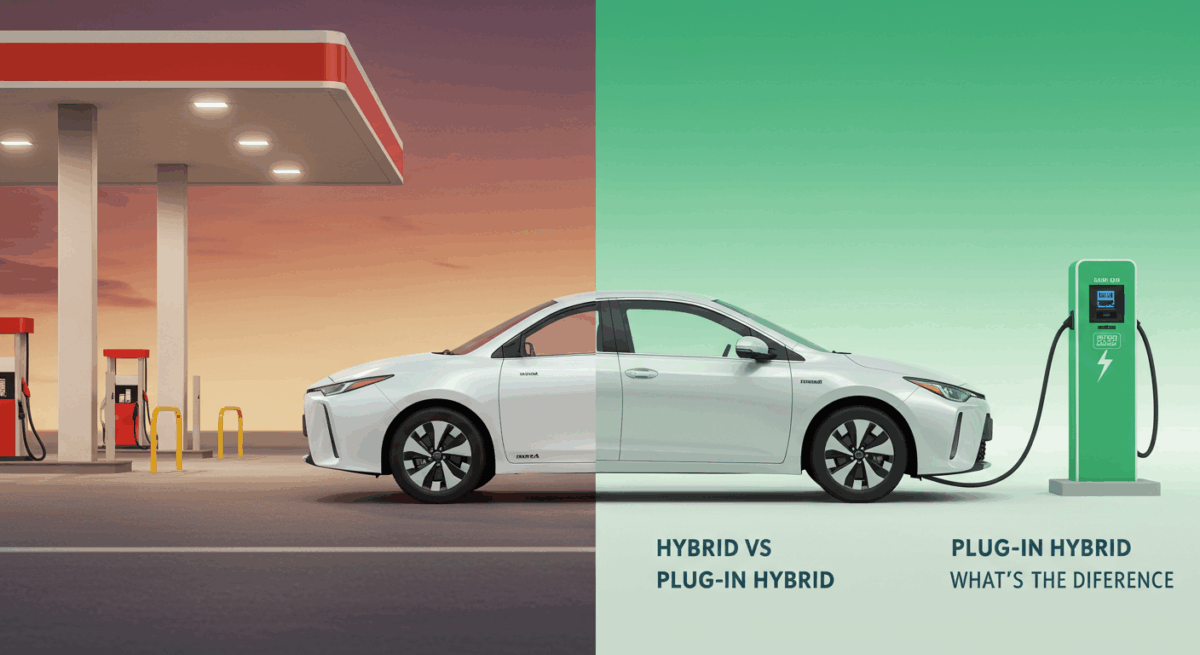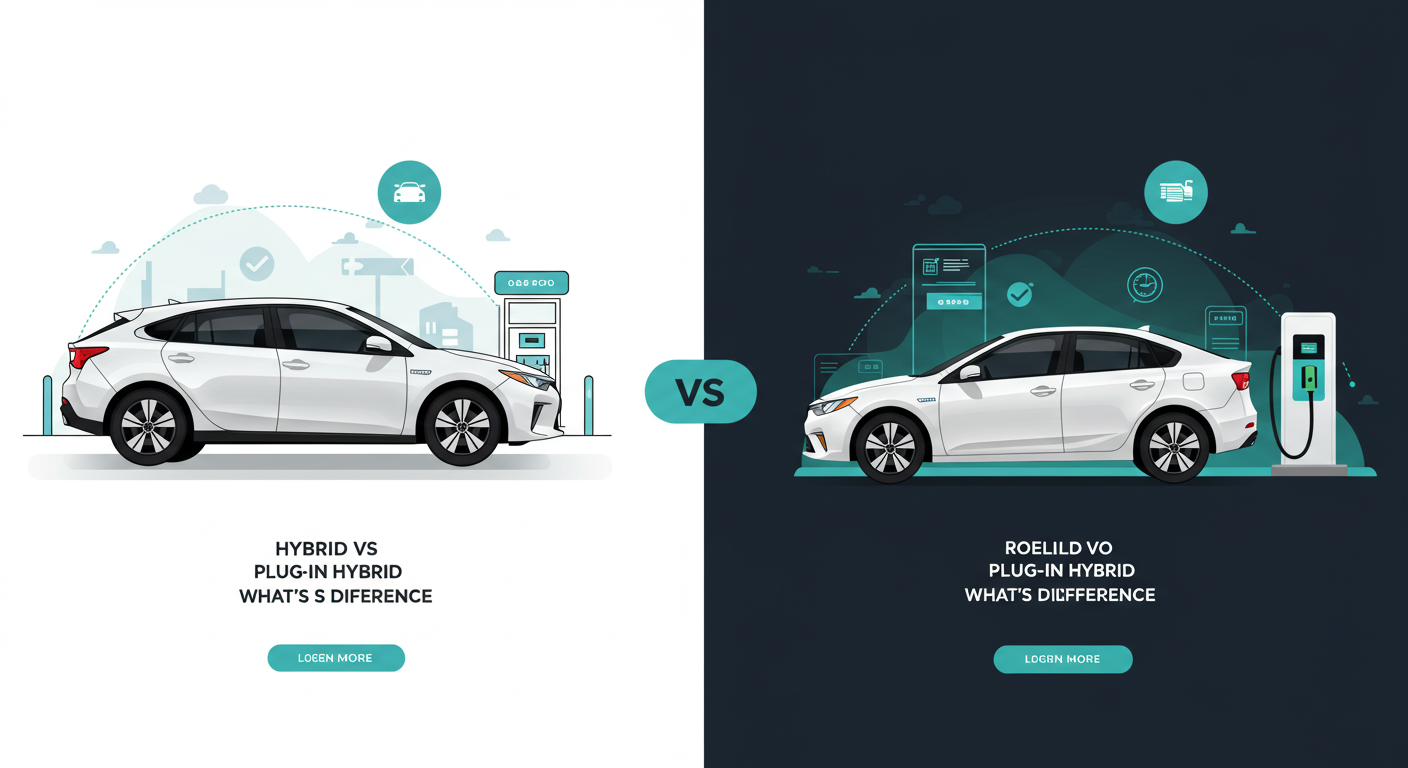If you’re thinking about going green with your next vehicle, chances are you’ve come across both hybrids and plug-in hybrids. While they may sound similar, there are some important differences that can affect everything from how you drive to how much you save. In this guide, we’ll break down the key points in the hybrid vs plug in hybrid debate so you can make the best choice for your lifestyle and budget.
With gas prices fluctuating and electric vehicle options expanding, now’s a great time to consider switching to a fuel-efficient ride. But before you sign on the dotted line, understanding the pros and cons of each option could save you time, money—and maybe even a trip to the gas station.
Understanding the Basics: Hybrid vs Plug-In Hybrid
Let’s start simple. A hybrid car combines a gasoline engine with an electric motor. The battery charges itself through regenerative braking and the gas engine—no need to plug in. A plug-in hybrid (PHEV), on the other hand, works similarly but comes with a larger battery that can be charged by plugging into an outlet. This lets you drive on electric power alone for short distances before switching to gas.
If you take a lot of short trips or have access to charging at home or work, a plug-in hybrid could dramatically cut your fuel costs. For those who don’t want to worry about plugging in, a standard hybrid still offers great efficiency.
What About Car Insurance for Hybrid Vehicles?
When comparing hybrid vs plug in hybrid, don’t forget to factor in car insurance. Insurance companies may charge slightly more for hybrids and plug-in hybrids due to higher repair costs and specialized parts. However, some providers offer discounts for eco-friendly vehicles, especially if your model is known for safety.
Plug-in hybrids may also qualify for green vehicle policies, which could reduce your premium if you demonstrate eco-conscious driving habits. Be sure to shop around and compare hybrid insurance rates before buying—this is a commonly overlooked cost that can add up fast.
Performance and Driving Experience
Hybrids tend to focus on fuel economy, which means they’re not built for speed. They usually rely on the electric motor at low speeds and switch to the gas engine as needed. Plug-in hybrids give you a bit more flexibility—you can run on electric-only mode for short commutes, which feels smooth and quiet.

Some plug-in models even offer a “sport mode” that combines electric and gas power for better performance. If you’re someone who wants a more dynamic ride with the benefit of EV range, plug-ins tend to win in this category.
Charging Time and Battery Range
This is where plug-in hybrids stand out. They come with larger batteries that typically offer between 20 to 50 miles of all-electric range. That means many people can handle their daily drives without using gas at all. Charging usually takes 2–4 hours on a Level 2 charger, or overnight on a standard home outlet.
Traditional hybrids don’t require charging—ever. That’s a plus for anyone without access to a charger or who just prefers the simplicity of gas. But it also means you’ll always be burning at least some fuel.
Cost Breakdown: Upfront and Long-Term
When it comes to price, regular hybrids are usually more affordable than plug-in hybrids. However, PHEVs may qualify for federal tax credits, which can offset the higher sticker price. Over time, the electric-only miles you drive can also lead to savings on gas, especially if prices rise.
Financing a Hybrid or Plug-In Hybrid
If you’re ready to buy, it’s worth looking into special financing deals for eco-friendly vehicles. Many automakers offer low-interest rates, cashback incentives, or lease programs on hybrids and PHEVs. Credit unions and green banks may also have loans tailored for energy-efficient purchases.
Be sure to ask your dealer if the vehicle qualifies for federal or state-level rebates, which could lower your monthly payments or give you a bigger down payment. With the right combination of rebates and financing, driving greener doesn’t have to cost more.
Maintenance and Longevity
Both types of hybrids require less maintenance than traditional cars since they rely more on electric power. That means fewer oil changes and brake repairs, especially if you do a lot of city driving. Plug-in hybrids may require battery checks or software updates, but those are usually covered under warranty.
If you plan to keep your car for 8–10 years, hybrids and PHEVs can offer excellent reliability—just make sure you follow the recommended maintenance schedule from the manufacturer.
Which One Is Right for You?
Still torn between hybrid vs plug in hybrid? Here’s a quick breakdown:
- Choose a hybrid if: You want simplicity, lower upfront cost, and no need to charge.
- Choose a plug-in hybrid if: You have short commutes, access to charging, and want to use less gas.
Ultimately, both options offer a great transition from gas-only vehicles to a greener future. It all comes down to your daily habits, budget, and whether you’re ready to plug in.
Final Thoughts: Smarter Driving Starts Here
The world is moving toward electric—and hybrids are a smart step in that direction. Whether you go for a classic hybrid or a plug-in model, you’ll enjoy better fuel efficiency, lower emissions, and the latest automotive tech. Just remember to compare insurance rates, explore financing options, and factor in your charging needs.
Choosing between hybrid vs plug in hybrid doesn’t have to be complicated. Once you understand your own driving style, the decision becomes a lot clearer—and your wallet will thank you later.




